Participants: Volodin I.A., Volodina E.V., Sibiryakova O.V.
Funded Russian Foundation for Basic Research (RFBR, grant 15-04-06241) and Russian Sciece Foundation (RSF, grant 14-14-00237-Ï).
Vocal rutting displays of harem-holding ungulates provide a convenient model for studying the within-species variation of the acoustic signals. Within a geographic distribution area of some ungulates, such as red deer, a surprising acoustic variation of male rutting calls is observed across subspecies in spite of the general similarity of reproductive behaviour. Comparison of acoustic variation within and between populations of the same species enables understanding the mechanisms of vocal divergence by acoustic structure as well as evolution of communicative behaviour at initial stages of speciation. In addition, studying variation in the acoustic structure of rutting calls in red deer enables developing bioacoustical methods for identifying pure subspecies from hybrids in either nature or in captivity.
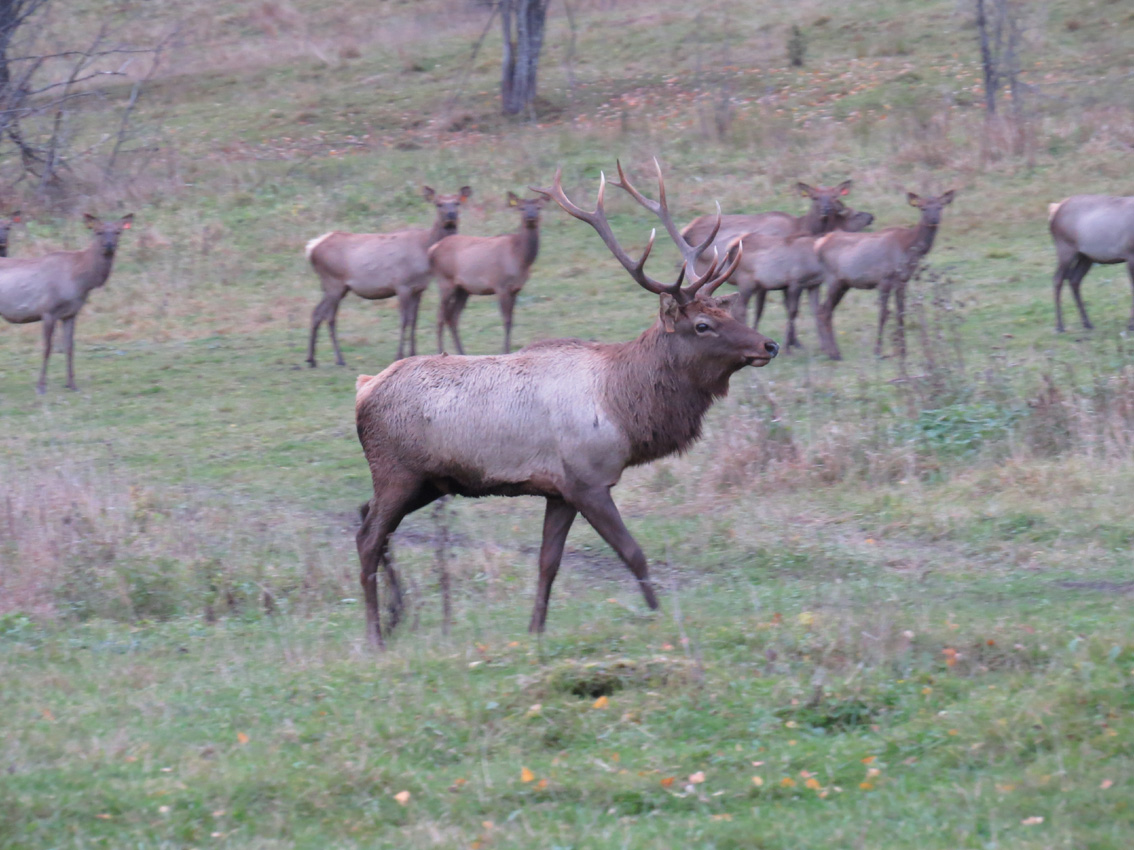
1. Red deer during the rut.
Already for a few years, in middle September we set off to study reproductive rutting behaviour of red deer. During the rut, red deer stags actively vocalize. They use these calls for attracting females and deterring rival males.
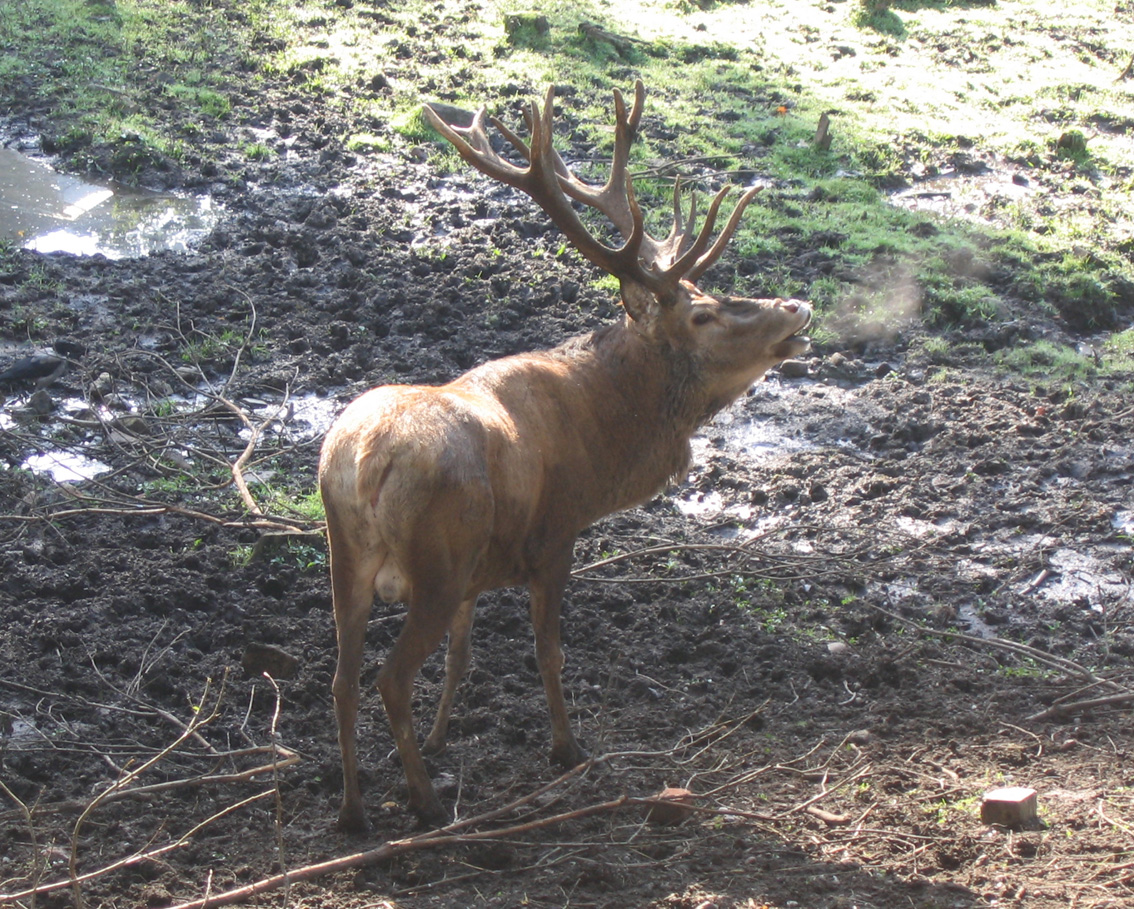
2. Central-European subspecies of red deer Cervus elaphus hippelaphus.
What call traits deliver information about stag quality, size and age? For the European subspeciesof red deer it is already known. Females select males with low call formants; such calls have bass sounding.
Audio 1_02. Rutting calls of male Central-European red deer.
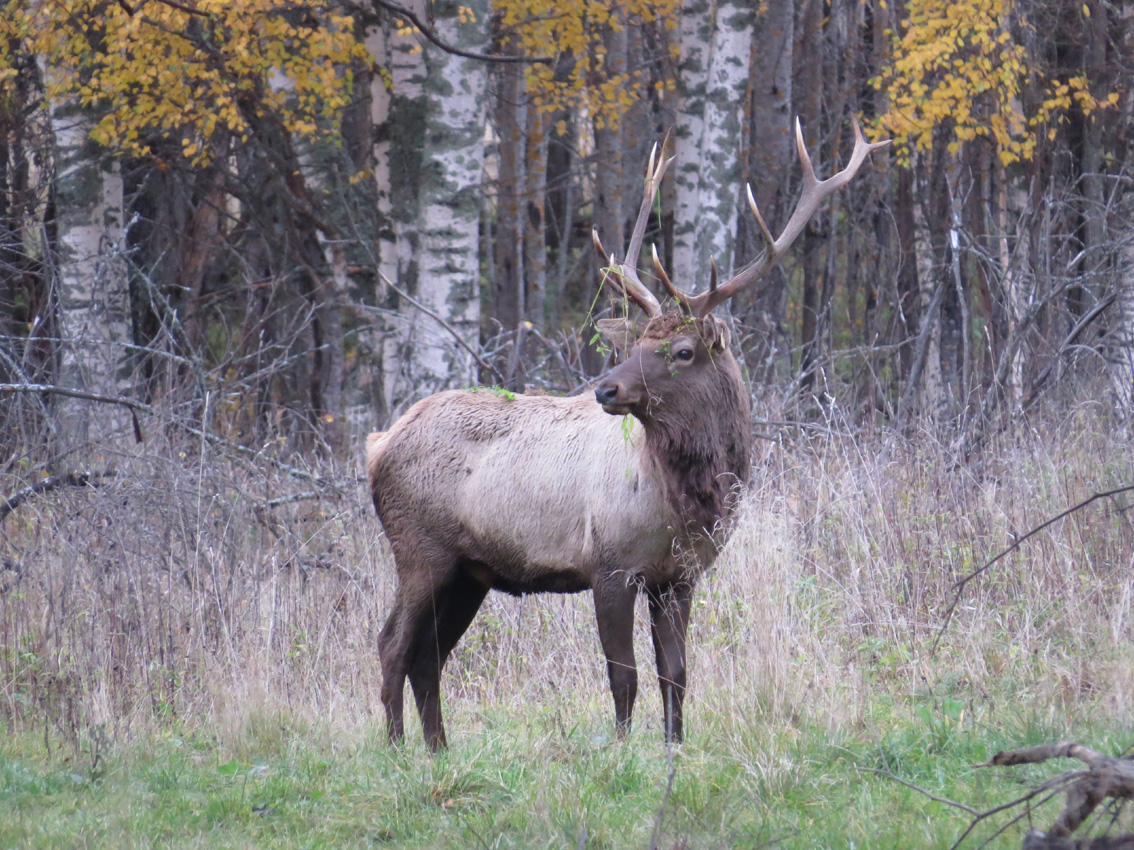
3. Siberian subspecies of red deer, the Siberian wapiti Cervus elaphus sibiricus.
For the Siberian subspecies of red deer, the Siberian wapiti this still had to be known. In the Siberian wapiti, rutting calls are very high-frequency, so the low-frequency formants cannot be revealed in such kind of calls.
Audio 2_03 Rutting calls of a Siberian wapiti stag.
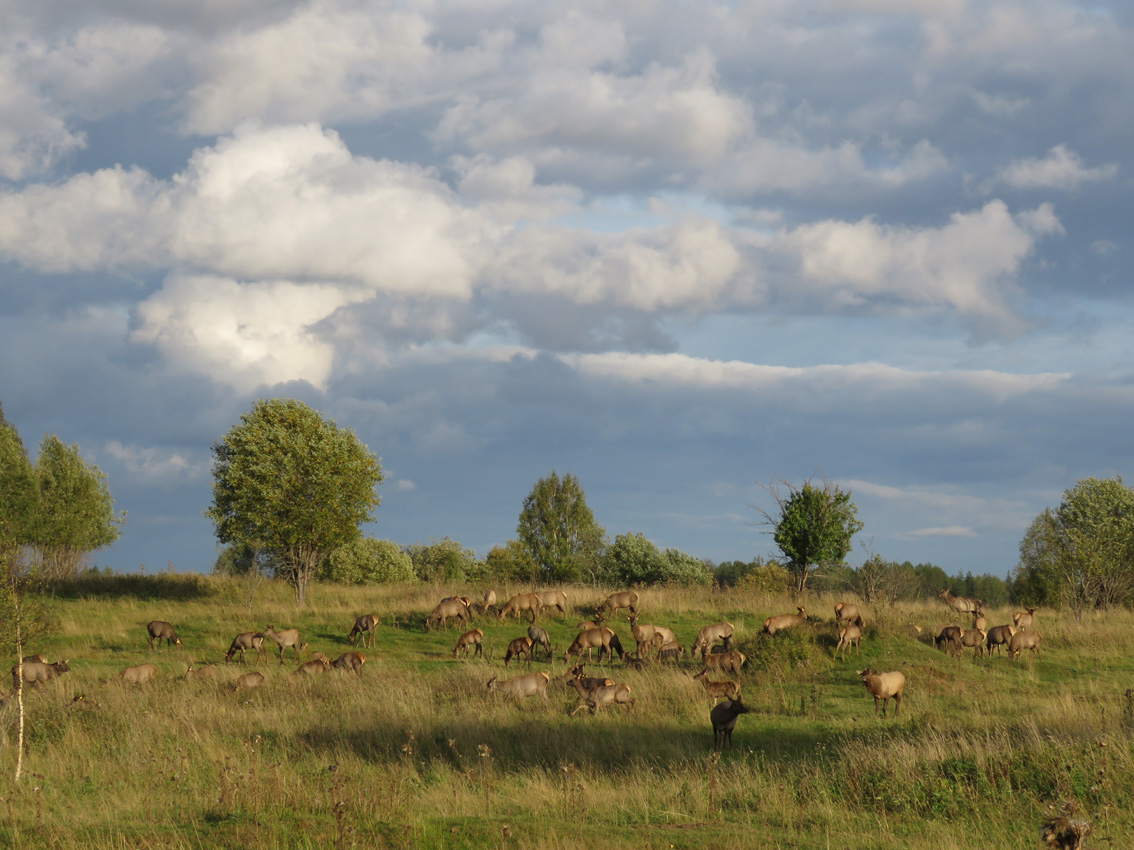
4. Siberian wapiti enclosure in the Kostroma Siberian wapiti ranchå.
Siberian wapiti transferred from three Altai deer farms, are bred in the Kostroma Siberian wapiti ranch .
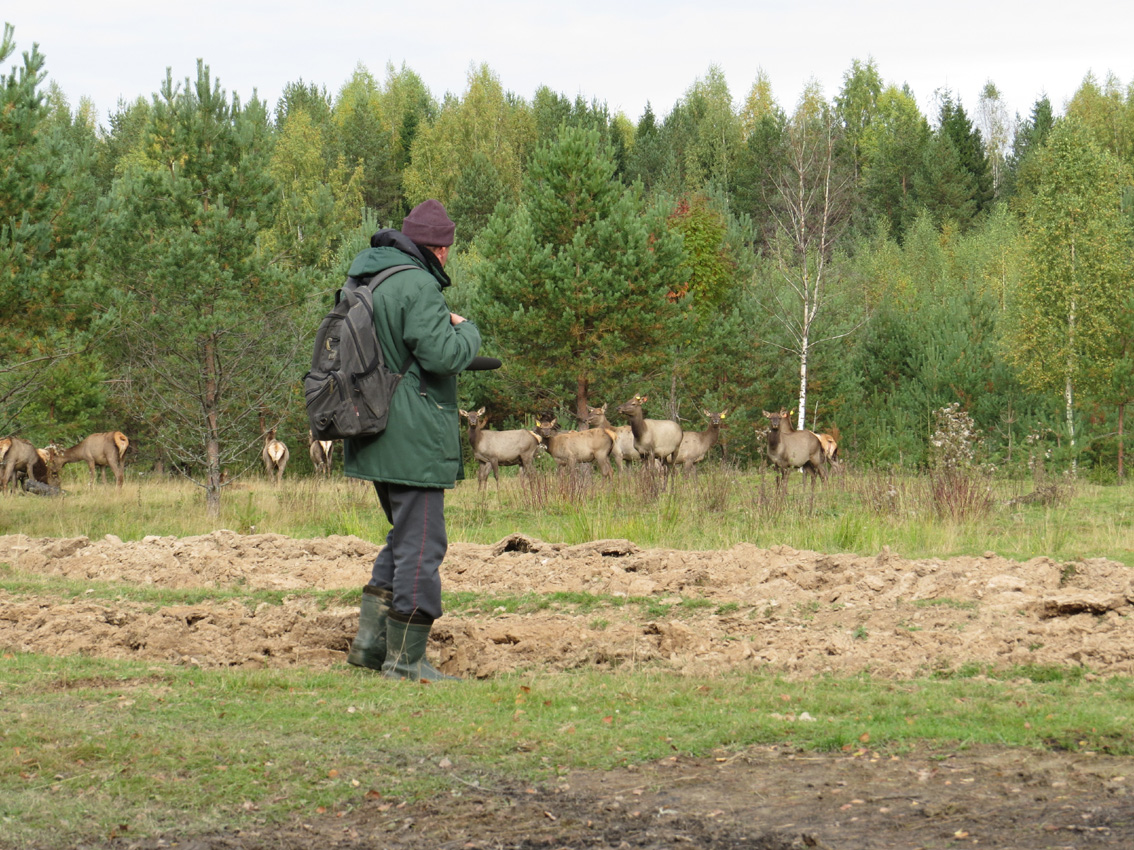
5. The researcher in the Siberian wapiti enclosure.
These deer are not afraid of people and are non-aggressive toward them, what enables conducting observations and acoustic recordings of stag calls inside the enclosures.
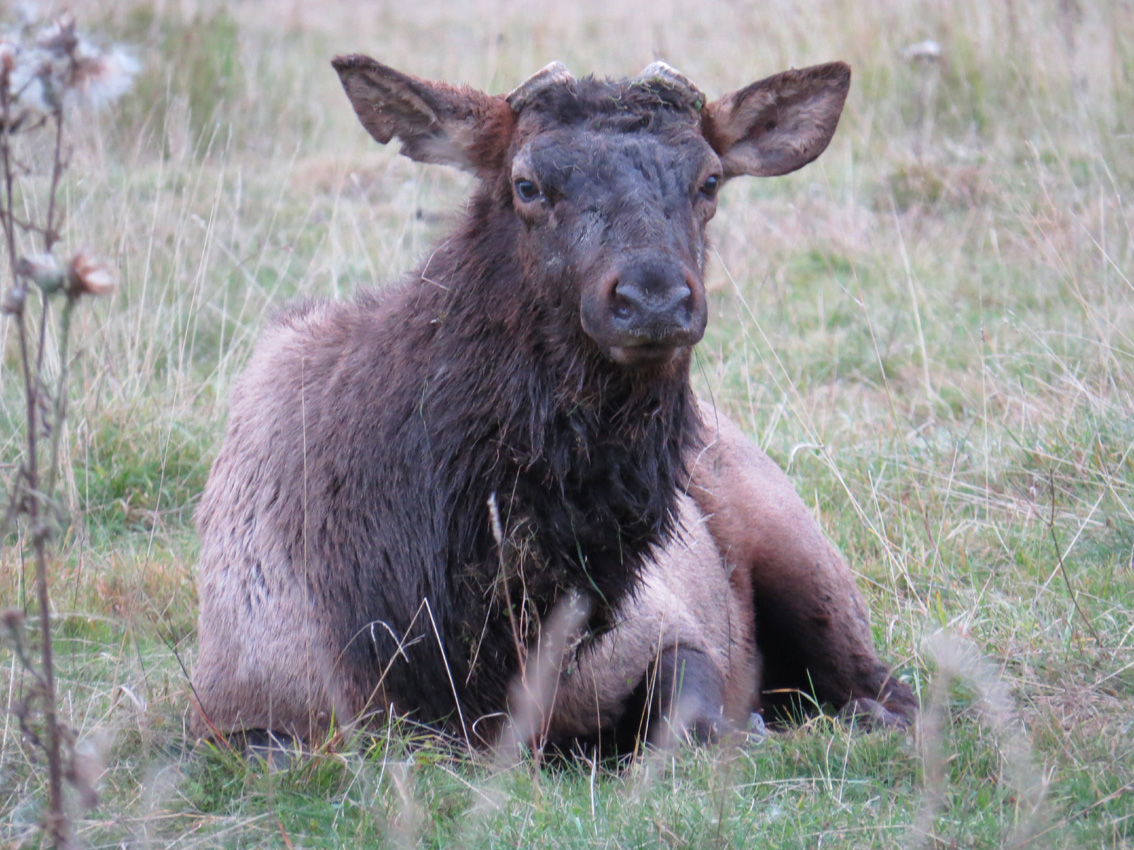
6. Adult male Siberian wapiti with sawed out antlers.
The Siberian wapiti are bred for their velvet antlers – that is, young antlers containing many tonic and medical substances. So, the antlers are sawed out in June, before they become hard.
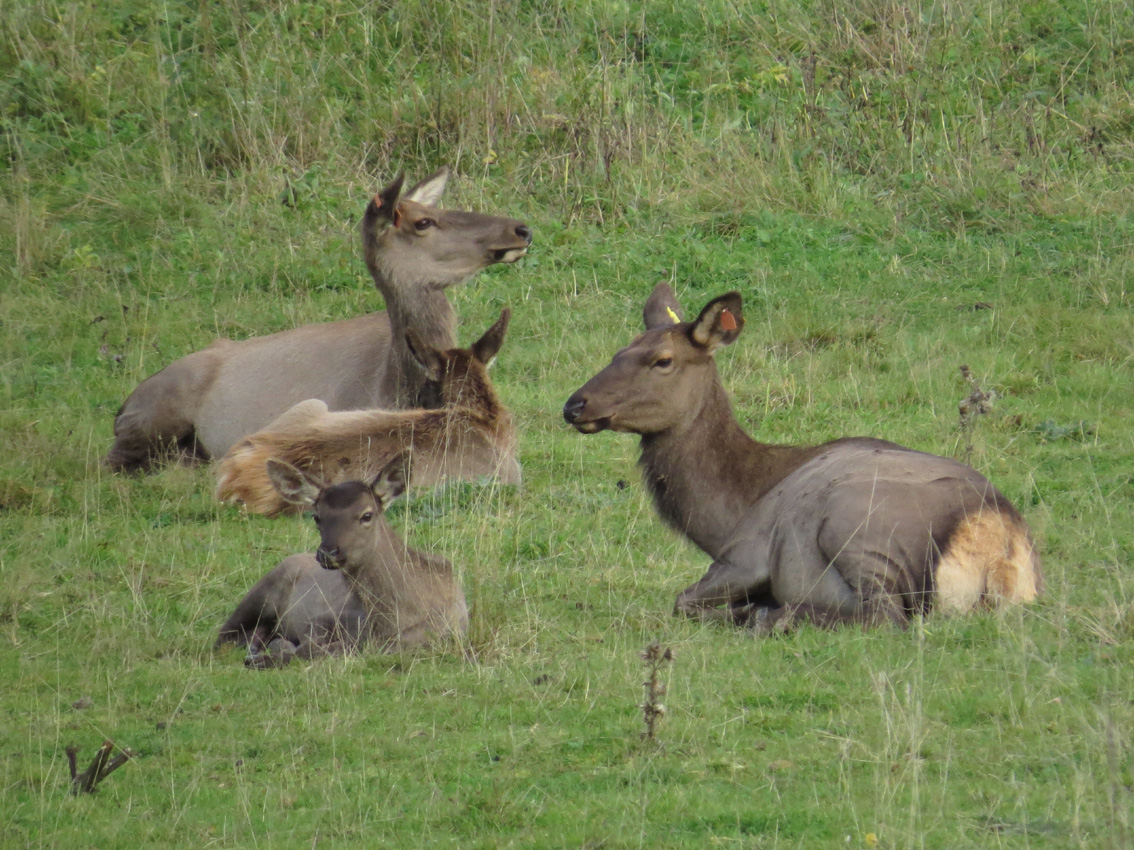
7. Female and young Siberian wapiti.
In summer, female and young are kept separately from stags, but at the end of August they are joined together with adult males.
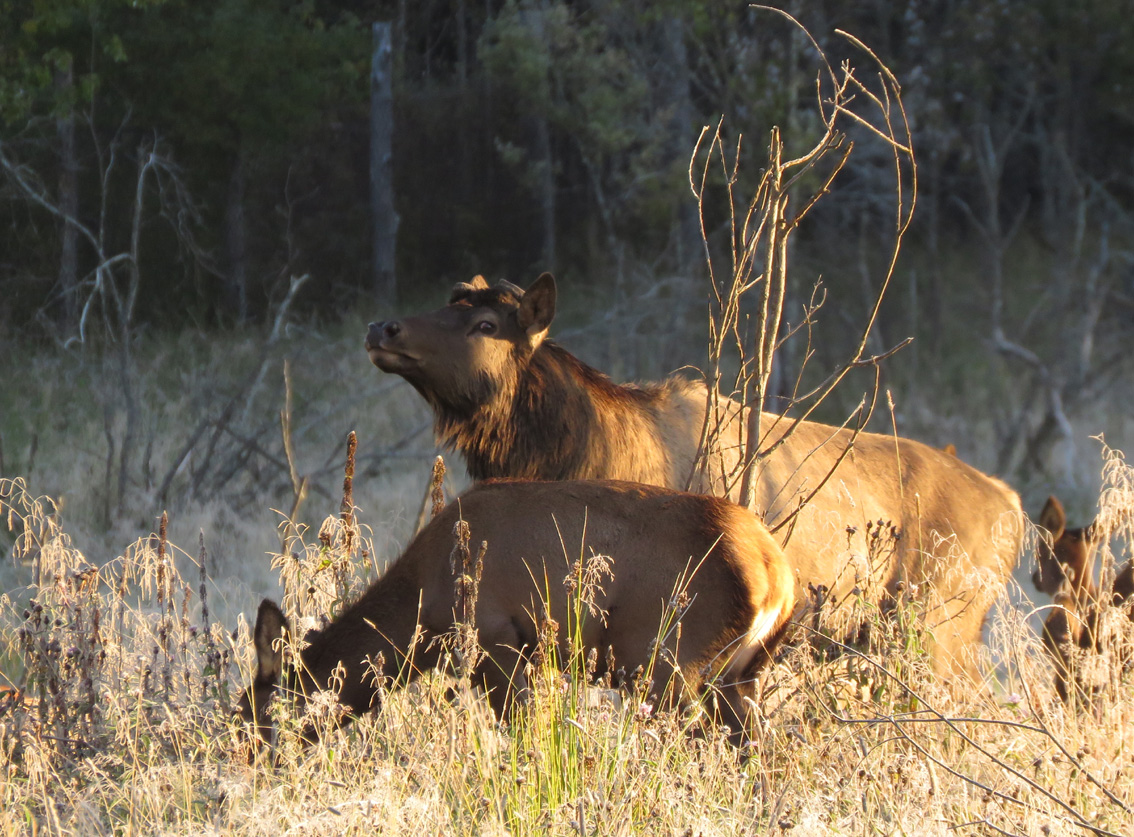
8. Rutting male Siberian wapiti.
Males try monopolizing females and hold harems.
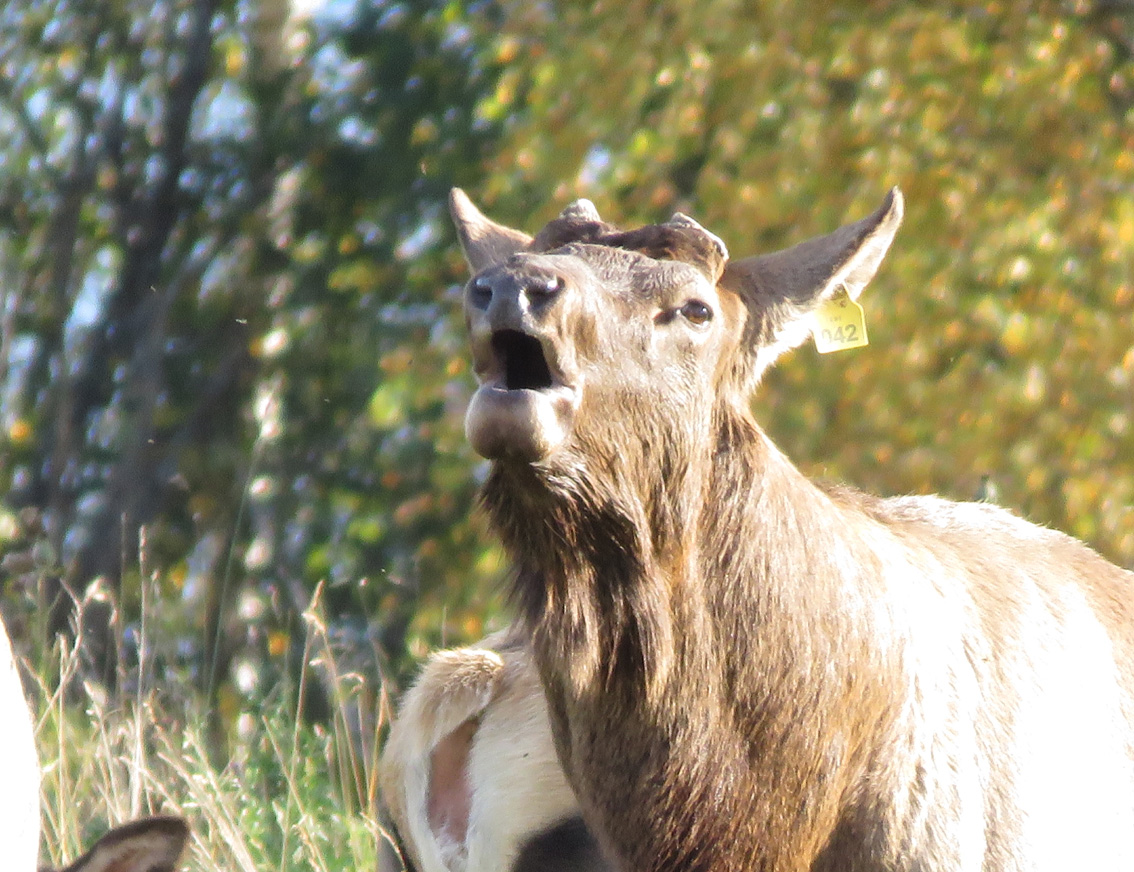
9. Harem stag vocalizes.
A harem stag calls much, drives away pretending males and guards females. So, he rests little and eats nearly nothing. The pretending stags permanently surround the harem from all sides, trying to come in and pursue lagging females. The harem stag quickly loses its strength so that, after about one week, one of the pretending males takes his place.
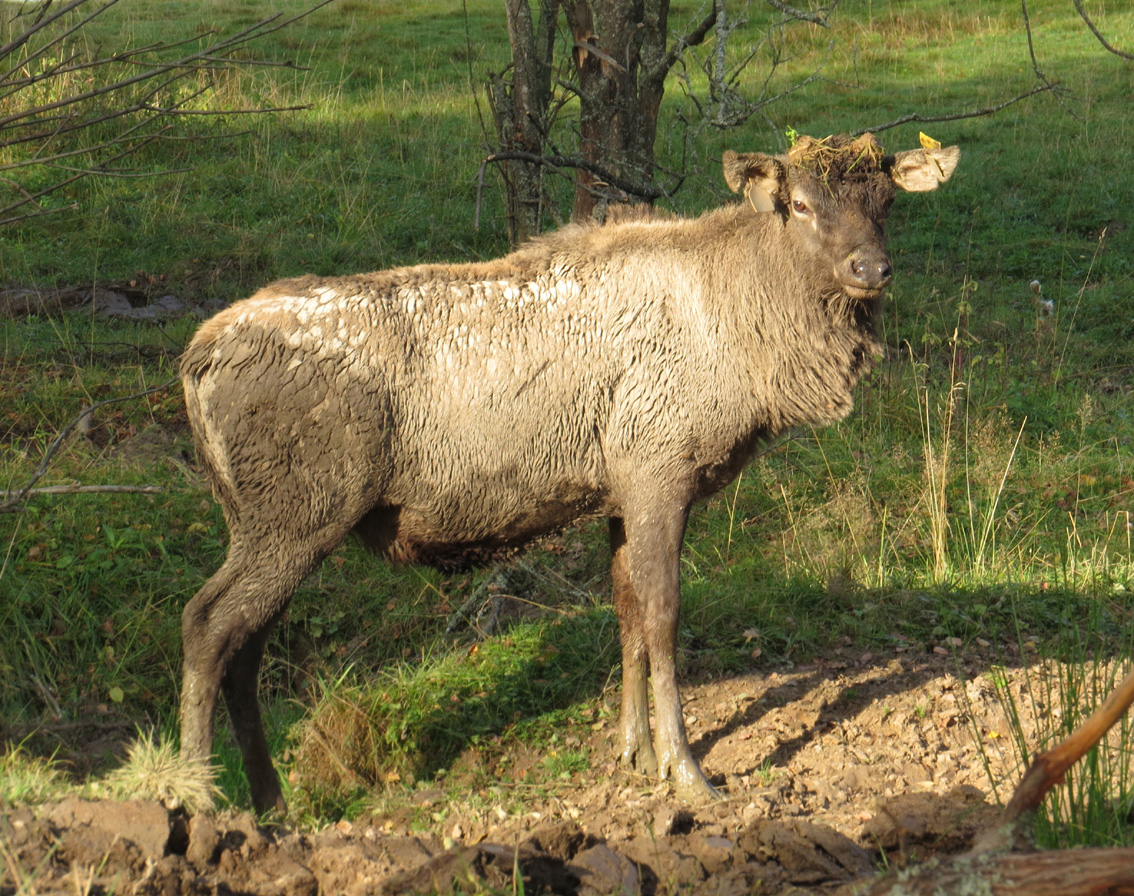
10. Males are not afraid of dirt.
High physical load results in stag overheating, so for the cooling, they are lying in the mud. Probably also that such dirty males consider that this way they are looking more beautiful in the female eyes.
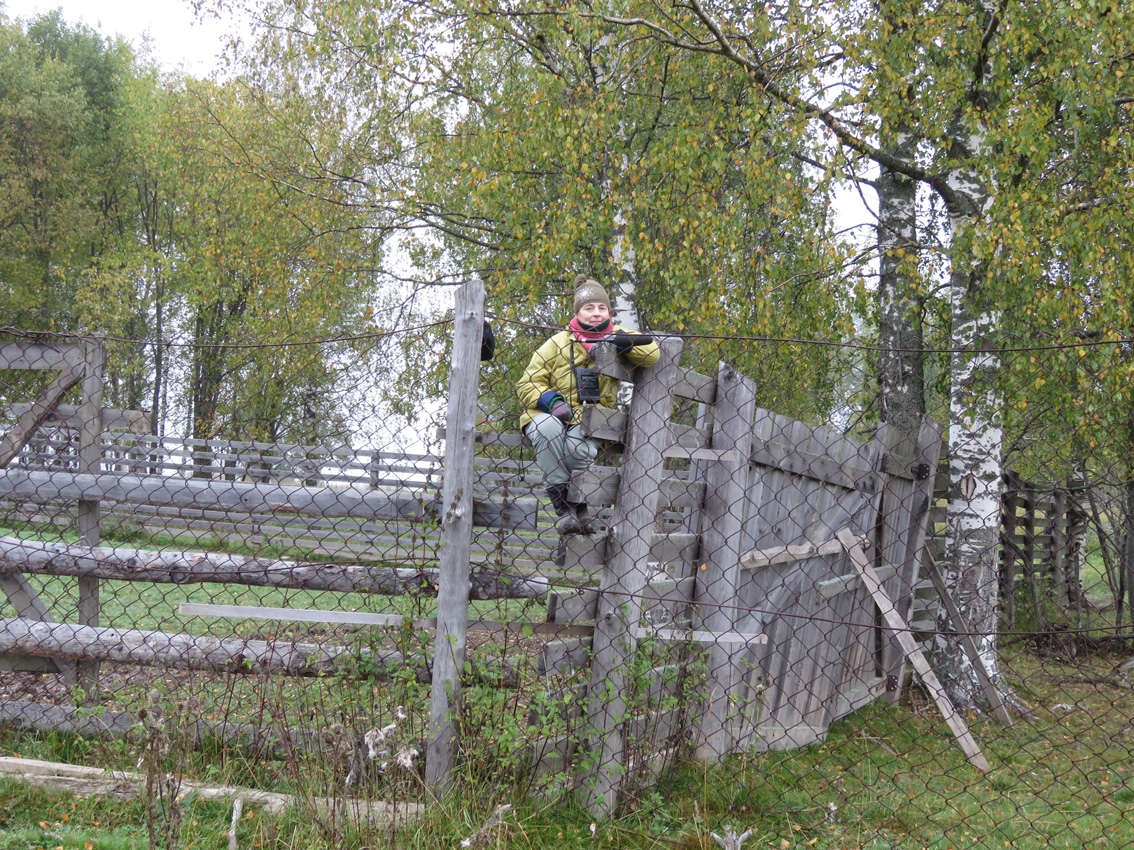
11. Observations of Siberian wapiti.
To observe deer, you have to use most unusual places. For example, climb higher on the fence to better see what is happening in the harem.
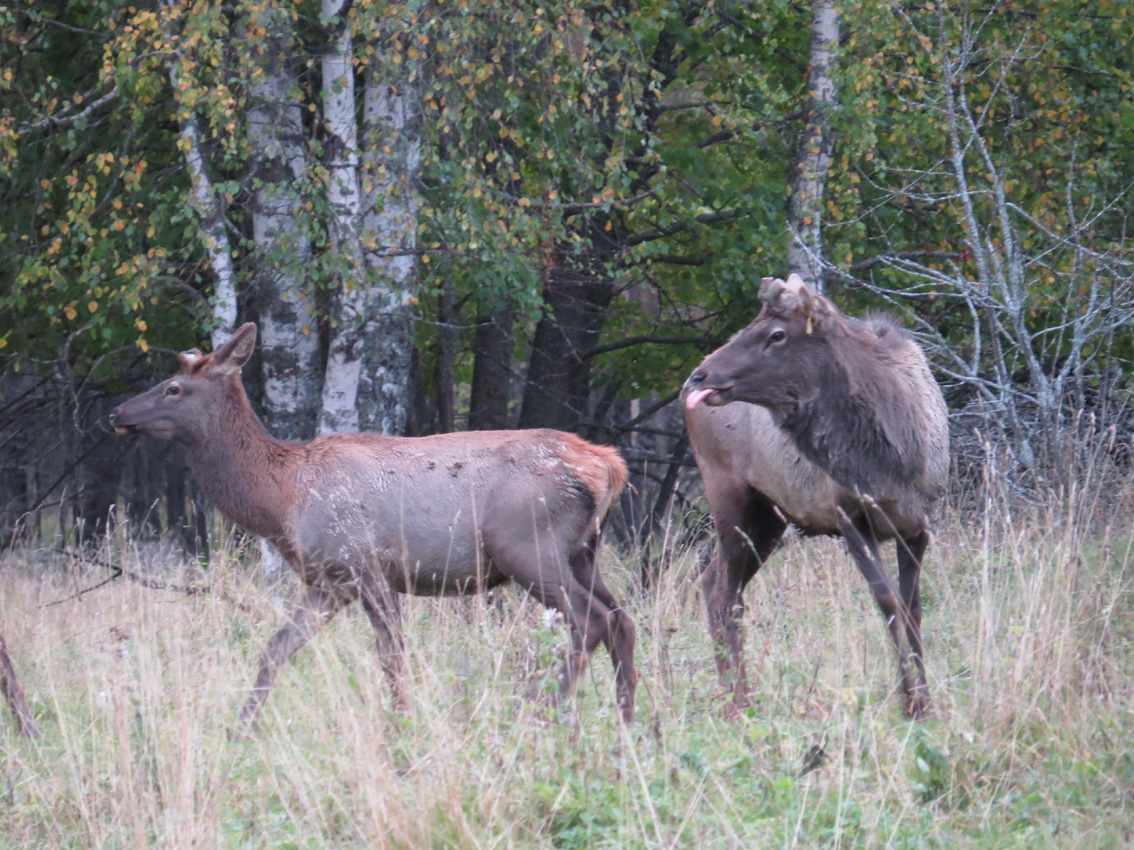
12. Male pretenders around the harem.
In order not to cause aggression of the harem male, male pretenders are afraid to call near the harem and only produce calls in one tenth of strength to make an impression that they are on much longer distance than in reality. The full-strength calls of male pretenders can be heard only at enclosure periphery near the single females or small female groups. So, recording calls of male pretenders is difficult, whereas for scientific analyses a few dozen calls per male is necessary.
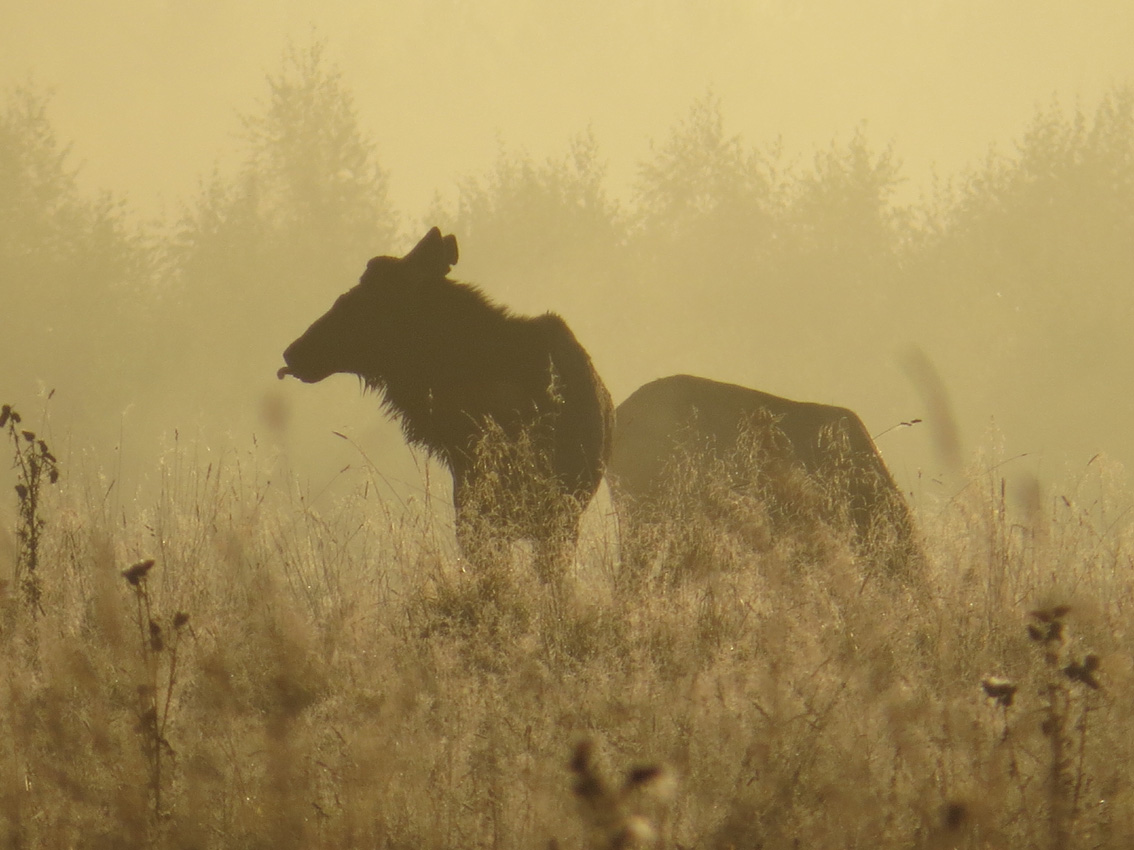
13. Foggy morning in the Siberian wapiti enclosure.
In the foggy morning, the wind is nearly lacking, so recording conditions are close to ideal. I am standing among male pretenders in 100 meters next to the harem. During a week, females habituated to people presence in the enclosure and probably consider me just as another one peripheral male.
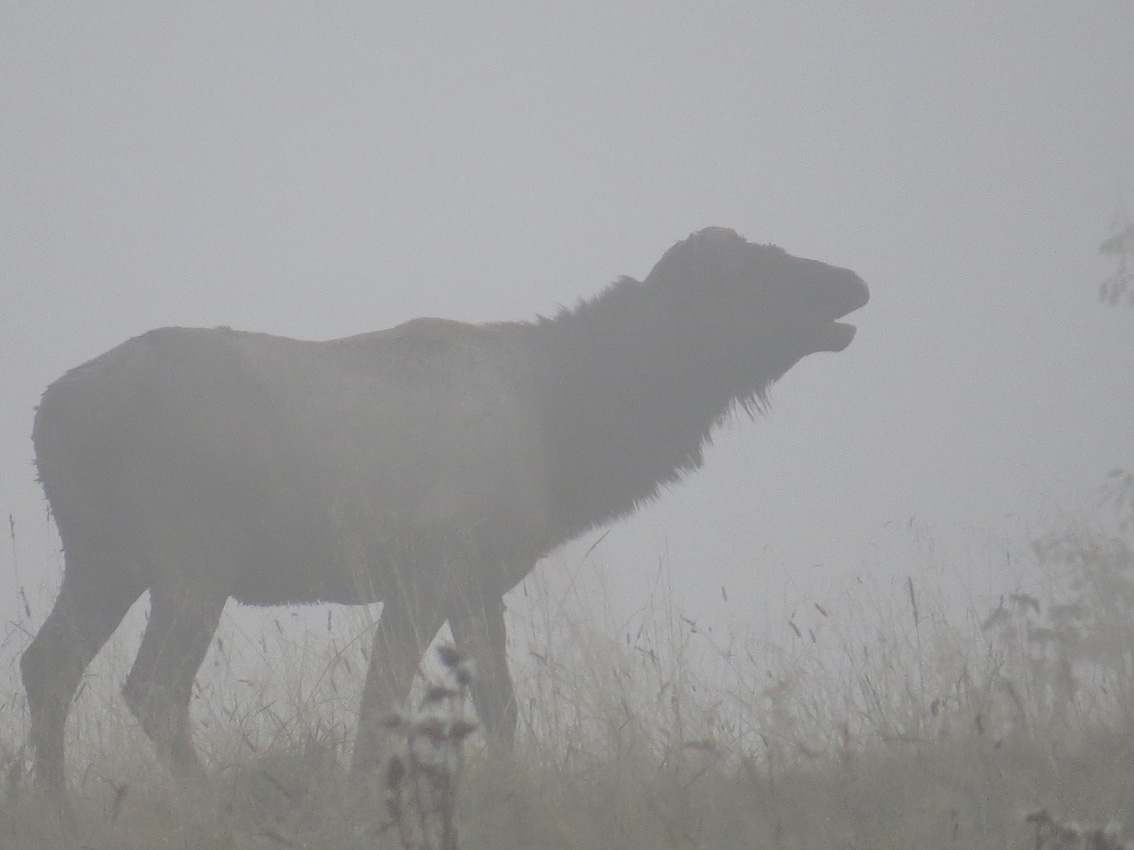
14. Siberian wapiti stag is calling in the fog.
One of the male pretenders departs from the main harem following a group of females. After departing for a few hundred meters, he starts calling. I go in parallel to him at a distance of about 40-50 meters, trying not to frighten the females, the more they do not see me very well in the fog.
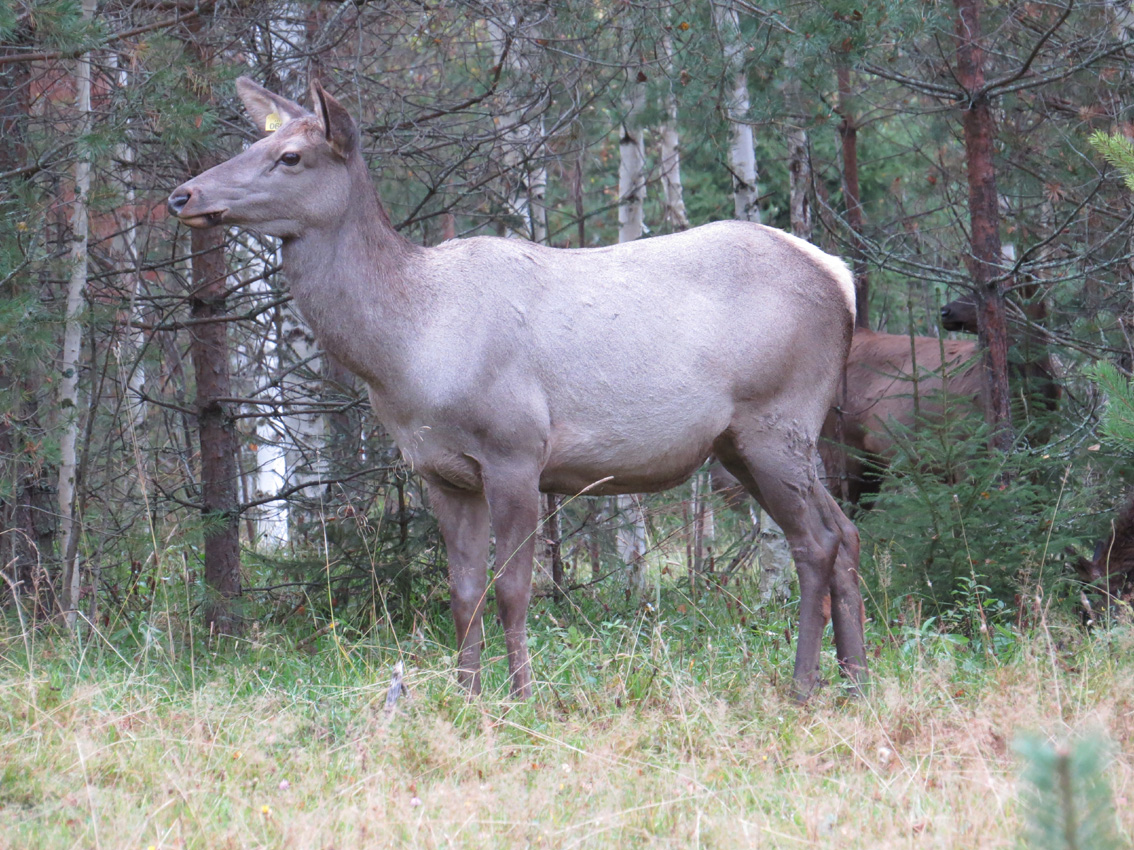
15. Even in the enclosure, deer try to stay in the trees.
For an hour in the fog we circle from one deer female to another. Mostly by walking slowly but sometimes trotting and running, jumping over a fallen tree and chasing through a high wet grass glade. The stag calls variably and repeatedly for self-advertising, but the females one-by-one reject him. I am hidden in the fog, recording one call after another.
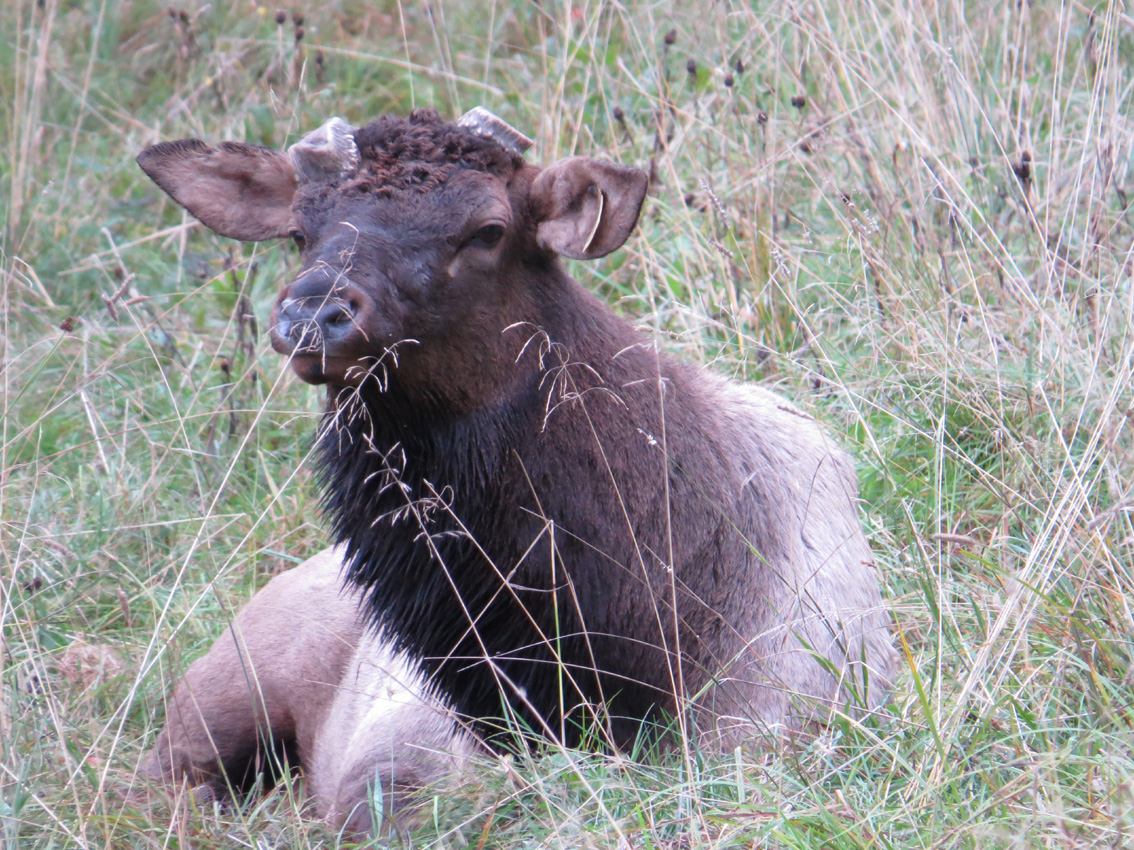
16. Resting male-pretender.
Finally, following the tracks and sniffing the earth as a dog, the male leads me to the harem. Again, he tries to come in the harem and again, receives a rebuff from the aggressive harem holder. It's nothing, as his time still will come. He lies down to rest on the wet cold grass, whereas I hurry to get a warm small house to look for the collected recordings. With gratitude for the amazing sensation of touching the hidden parts of life of these large animals.
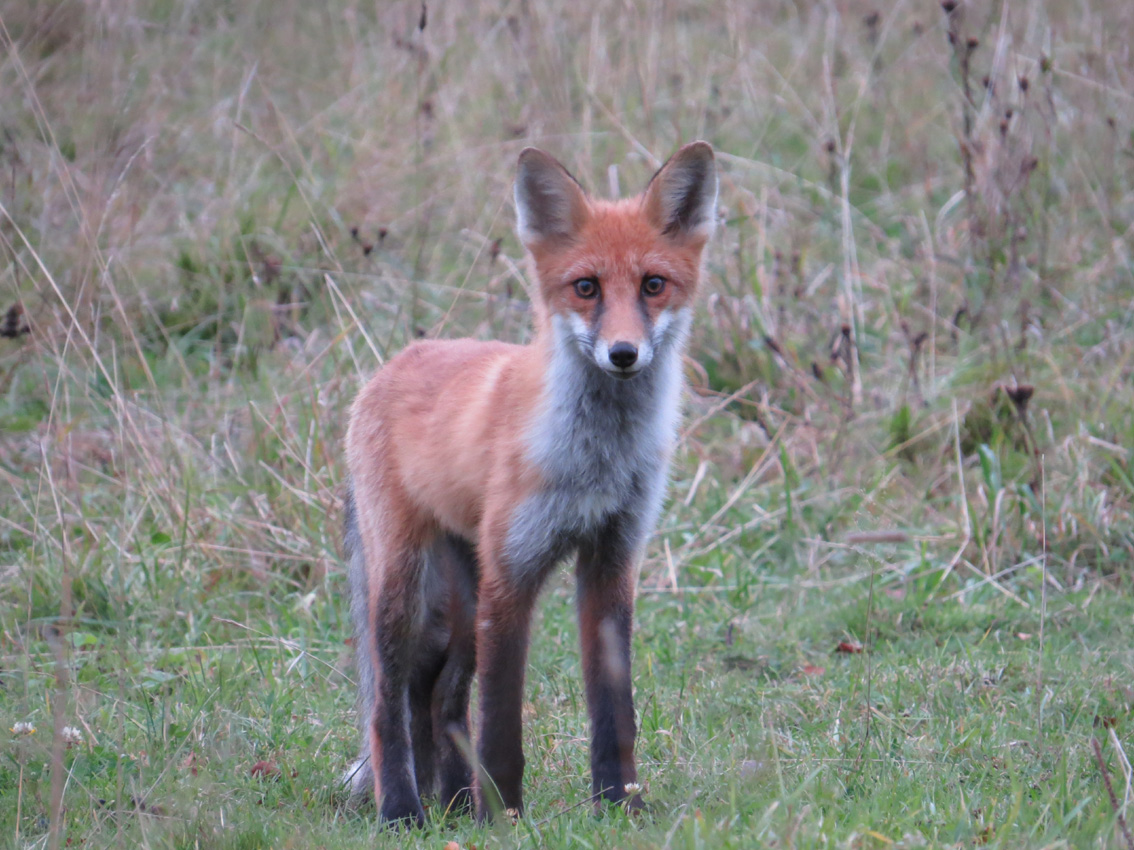
17. A fox cub
Aside deer, there are many wild animals and birds living in the enclosure. The red foxes even brought out cubs that grew to autumn and are not particularly afraid of people.

18. Butterfly.
In the sun-warmed places you can meet beautiful butterflies.
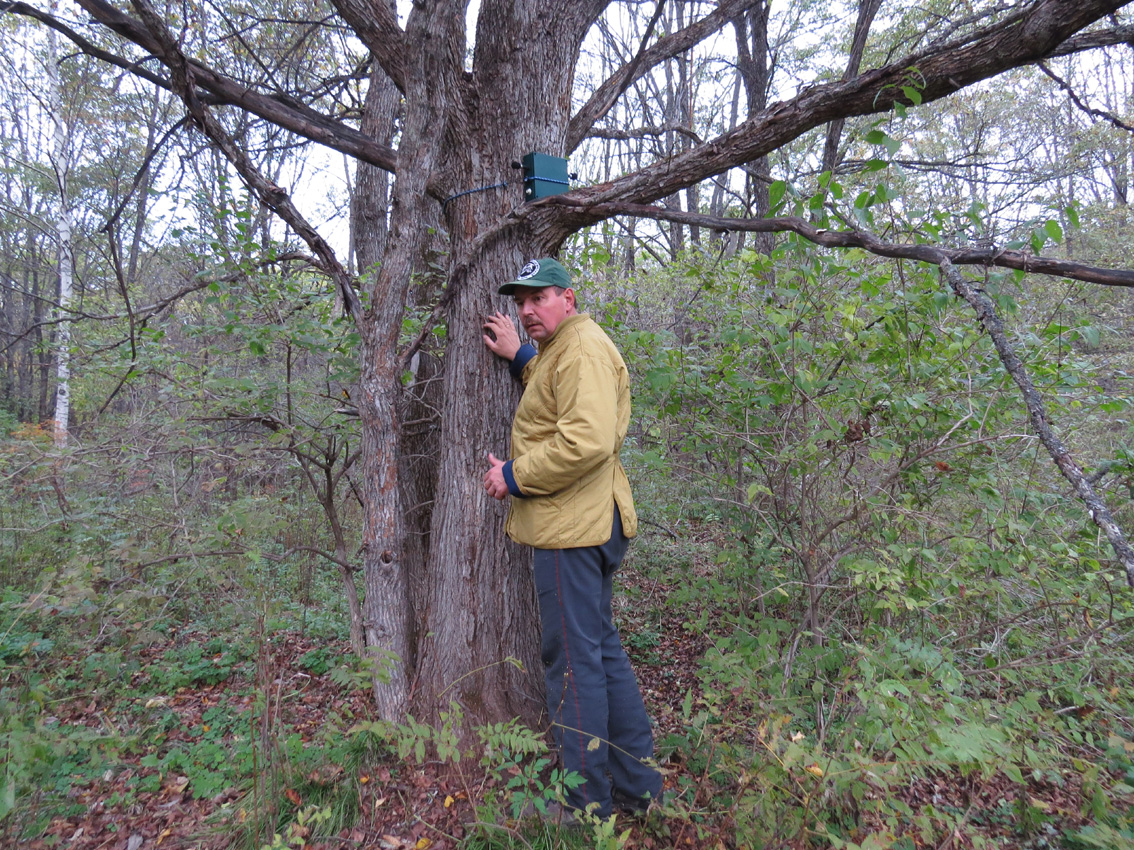
19. SongMeter is the device for the automated recording of sounds.
In addition to recording calls from individually identified males with hand-held microphones, as in previous years, we collect calls using automated recording systems (SongMeter SM2+), that work by prescheduled program in the absence of researchers.
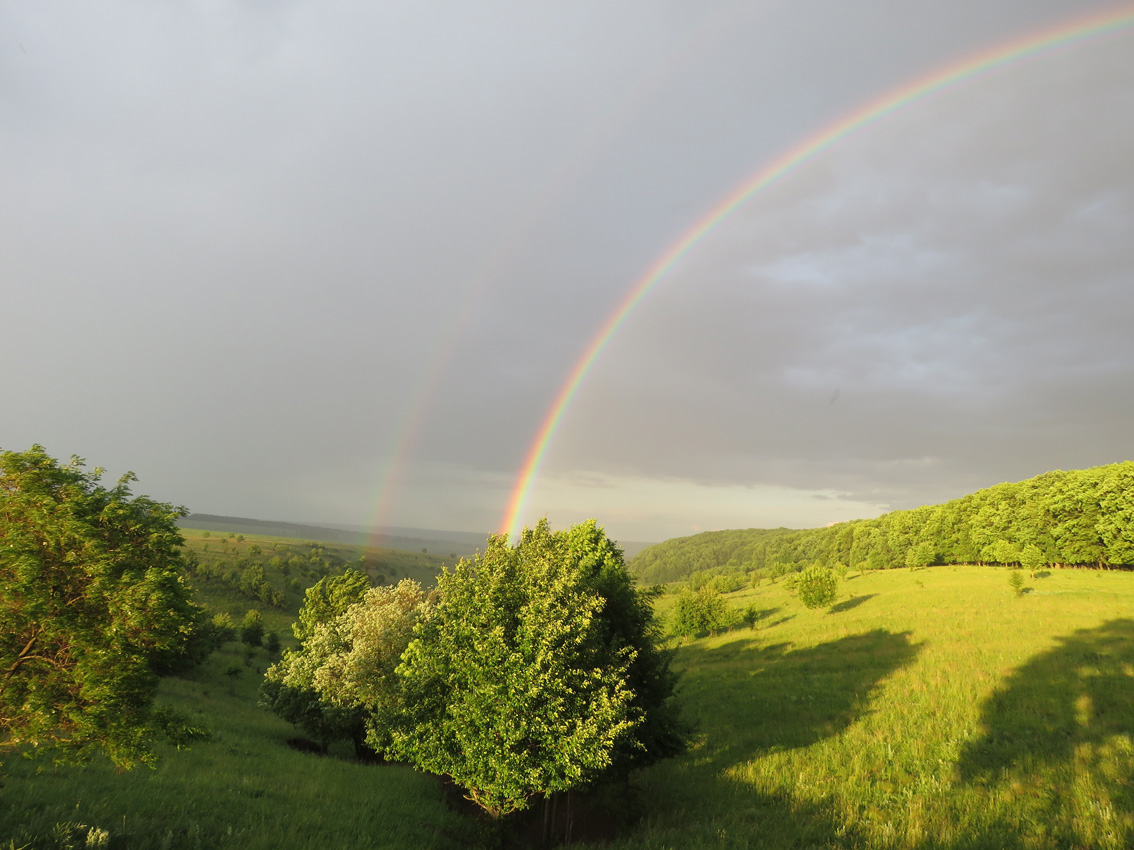
20. Deer habitats in the South of Russia.
A few SongMeters will record rutting calls of red deer in Belgorod, Bryansk and Lipetsk regions.
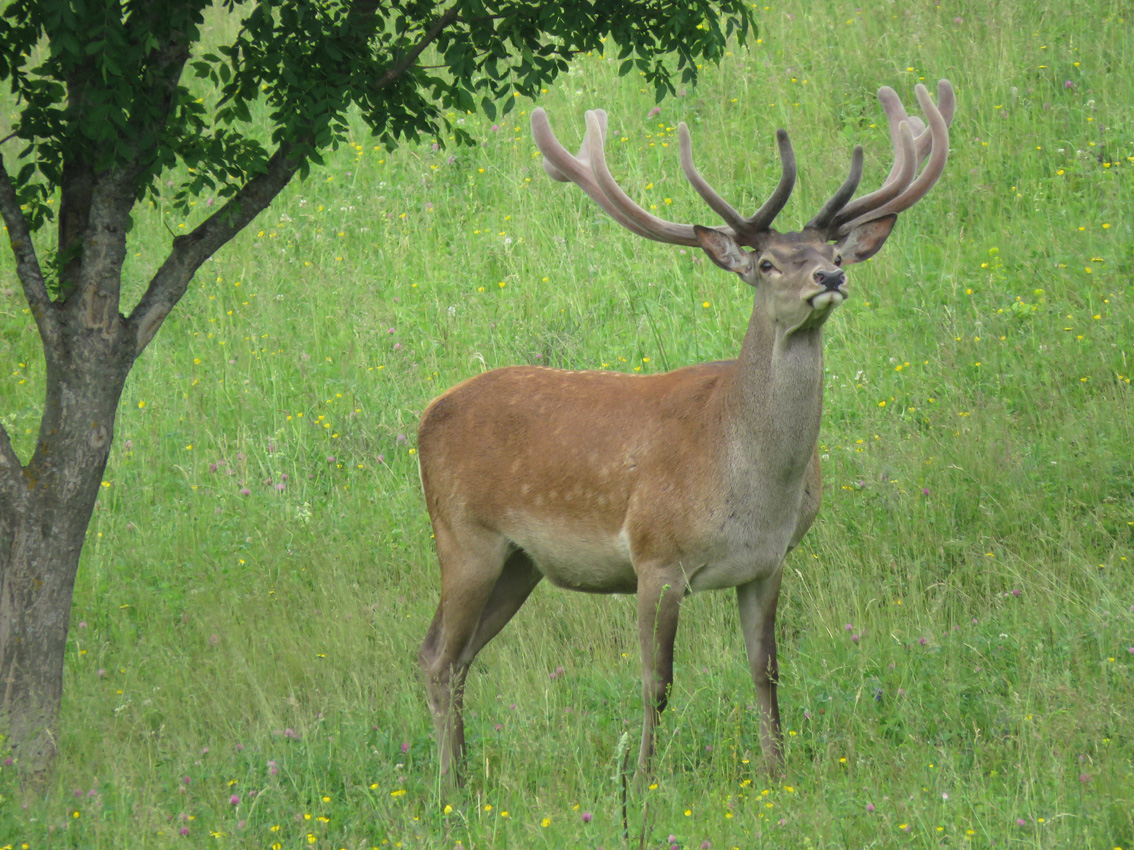
21. Red deer of the South of Russia.
Taxonomic status of red deer in the South of Russia had to be cleared, including on the basis of an analysis of the structure of their rutting calls.
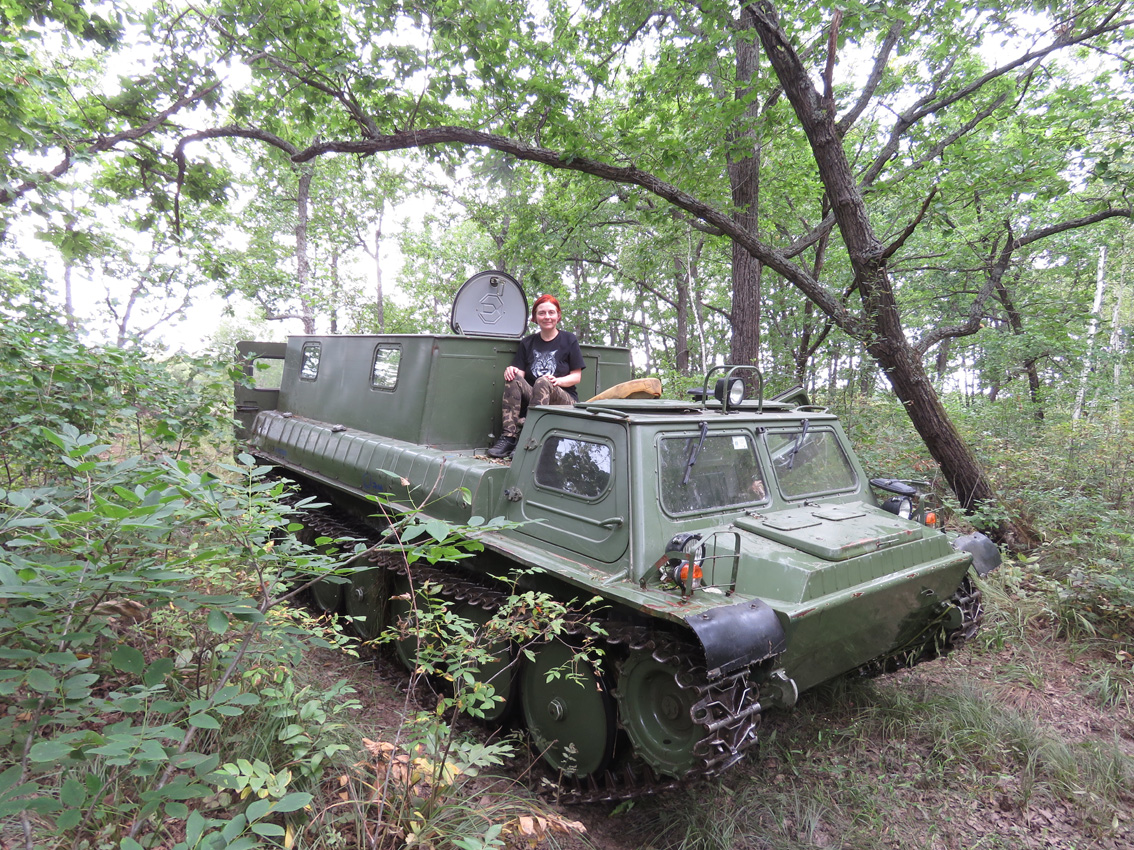
22. Cross-country vehicle for recording deer calls.
However, to some deer habitats to get very difficult. For installation of SongMeters in the Bolshekhekhtsirsky Reserve (Khabarovsky Krai) you have to go to the taiga on a cross-country vehicle.
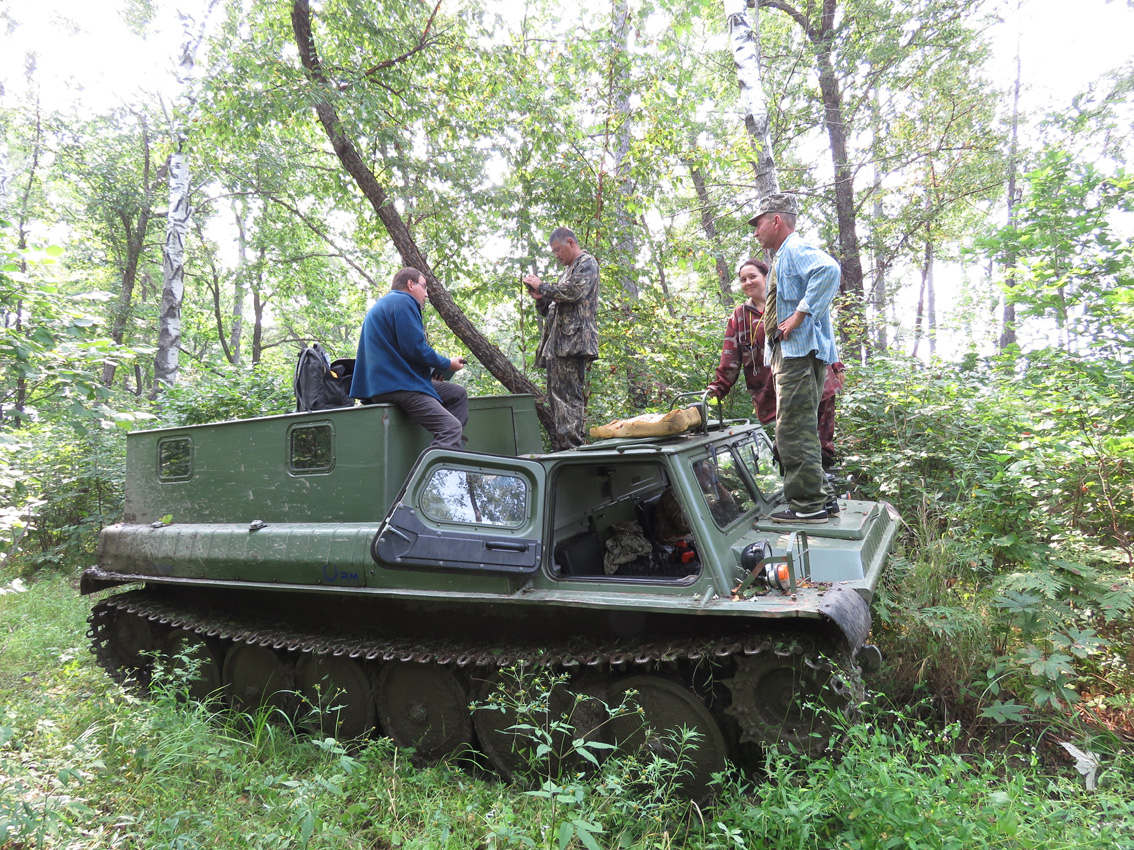
23. Installation of the SongMeter for recordings the Far East wapiti (Cervus elaphus xanthopygus).
But you can use the roof of a cross-country vehicle to install the SongMeters higher on trees, where they are less likely to be detected by Himalayan bears.
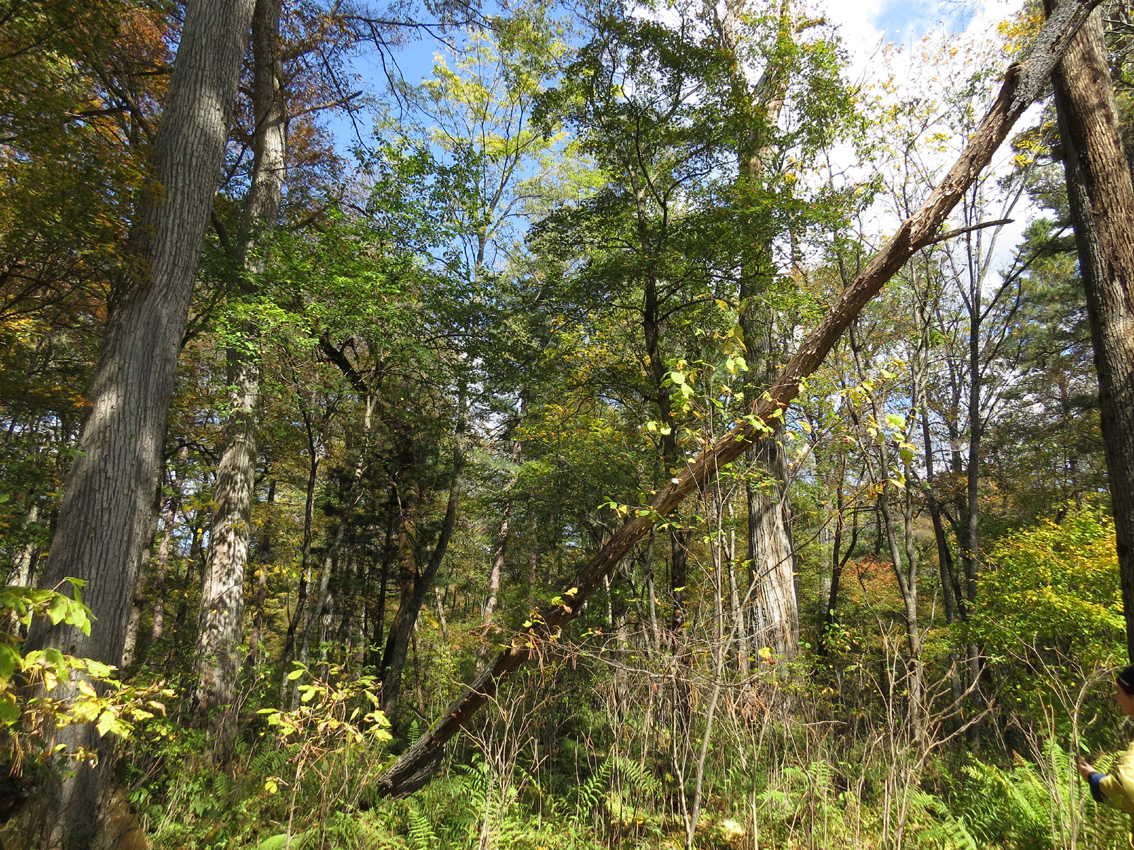
24. Dense forests - habitats of Far East wapiti.
It turned out that the rutting calls of Siberian and far East wapiti are considerable different, which makes it possible to use them for rapid diagnosis of subspecies both in nature and in captivity.
Audio 3_24. Rutting call of male Far East wapiti is substantially lower-frequency compared to those of Siberian wapiti.
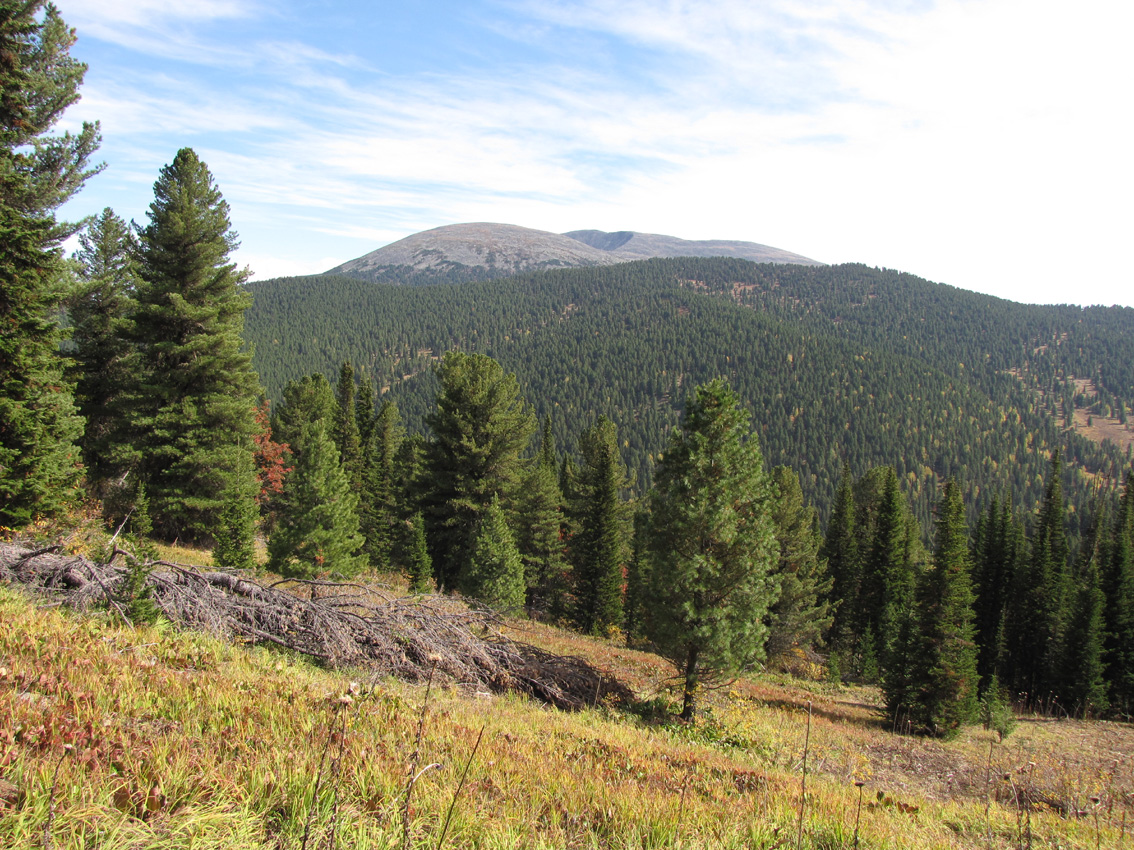
25. Mountain forests of Eastern Sayan mountain - habitats of Siberian wapiti.
The Far East wapiti live in dense forests, whereas the Siberian wapiti live in foothills. To hear them is much easier than to see.
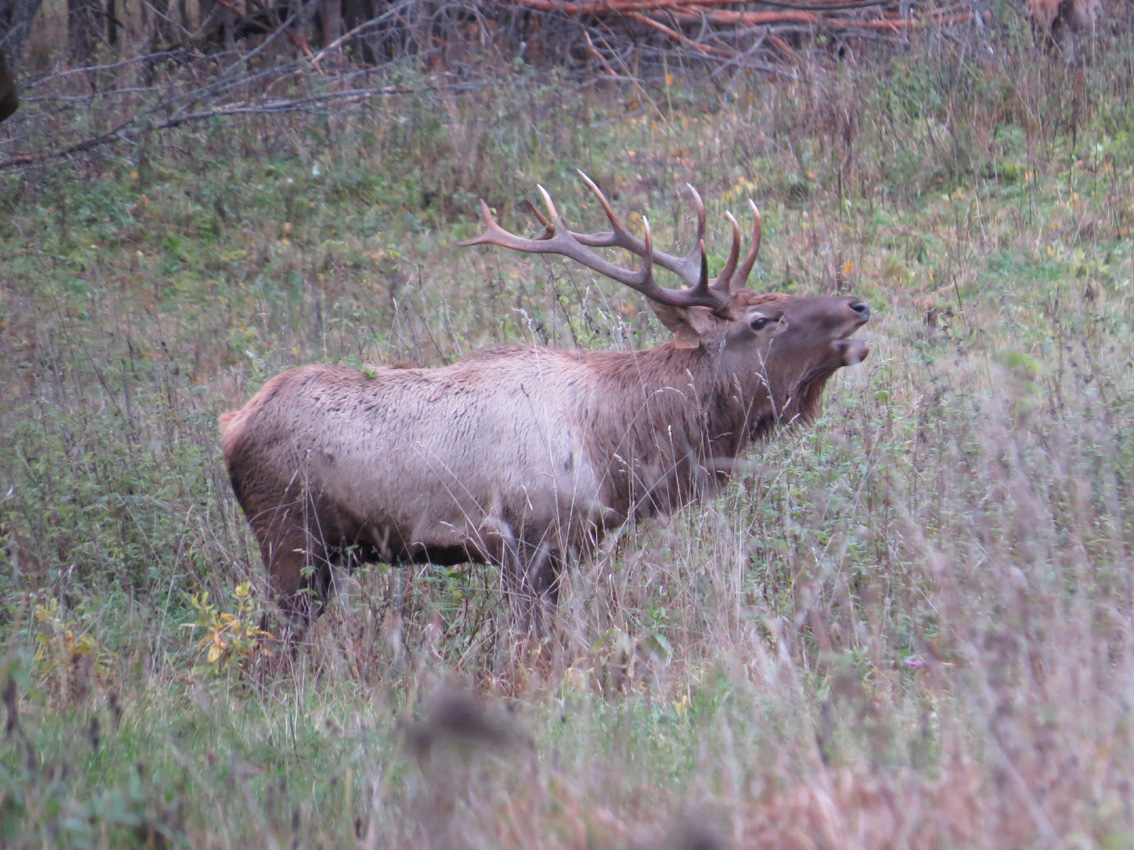
26. Rut in red deer.
Recordings of calls from SongMeters would enable calculating the dynamics of rutting activity during the entire period of the rut and analyzing the environmental factors (temperature, humidity, wind, precipitation) that affect the behavior of rutting male deer.
| 

























